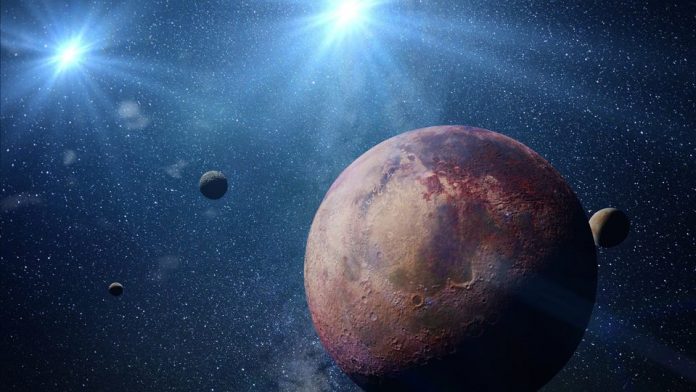Four exoplanets have been discovered around star TOI-1233 by two high schoolers, making them among the youngest people to have ever discovered a celestial body.
Sixteen-year-old Kartik Pinglé and 18-year-old Jasmine Wright were participating in the Student Research Mentoring Program (SRMP) at the Center for Astrophysics | Harvard & Smithsonian, mentored by Dr Tansu Daylan, a postdoc at the MIT Kavli Institute for Astrophysics and Space Research. They are now co-authors on a paper reporting the discovery published in The Astronomical Journal
TOI-1233 is one of the stars being studied by NASA’s planet-hunting Transiting Exoplanet Survey Satellite (TESS). The satellite studies hundred of thousands of stars hoping to catch the tell-tale flickering that suggests a planet is passing between us and them.
“We were looking to see changes in light over time,” Pinglé explained in a statement. “The idea being that if the planet transits the star, or passes in front of it, it would [periodically] cover up the star and decrease its brightness.”
The team found this to be the case for TOI-1233. To their surprise, they saw evidence of not one but multiple planets. Three of these objects are expected to be gaseous planets a bit smaller than Neptune, classified as sub-Neptunes. There is also what looks like a large rocky planet that is believed to be a super-Earth.
“I was very excited and very shocked,” Wright said of the discovery. “We knew this was the goal of Daylan’s research, but to actually find a multi-planetary system, and be part of the discovering team, was really cool.”
Discovering multi-planetary systems like this is very important. Even though TOI-1233 is radically different from our own corner of the galaxy, it can provide important insights into how the solar system came to be.
“Our species has long been contemplating planets beyond our solar system and with multi-planetary systems, you’re kind of hitting the jackpot,” Daylan explained. “The planets originated from the same disk of matter around the same star, but they ended up being different planets with different atmospheres and different climates due to their different orbits. So, we would like to understand the fundamental processes of planet formation and evolution using this planetary system.”
The mentoring program, directed by astrochemist Dr Clara Sousa-Silva, aims to connect local high school students who are interested in scientific research with real-world scientists at Harvard and MIT. It accepts a dozen students per year, prioritizing those from underrepresented minorities in science, who carry our paid research working with mentors on a year-long project.
“They are salaried scientists,” Sousa-Silva explained. “We want to encourage them that pursuing an academic career is enjoyable and rewarding—no matter what they end up pursuing in life.”
Over the last few years, several teens have gotten involved in exoplanetary research discovering hot Jupiters, as well planets orbiting binary stars.





























